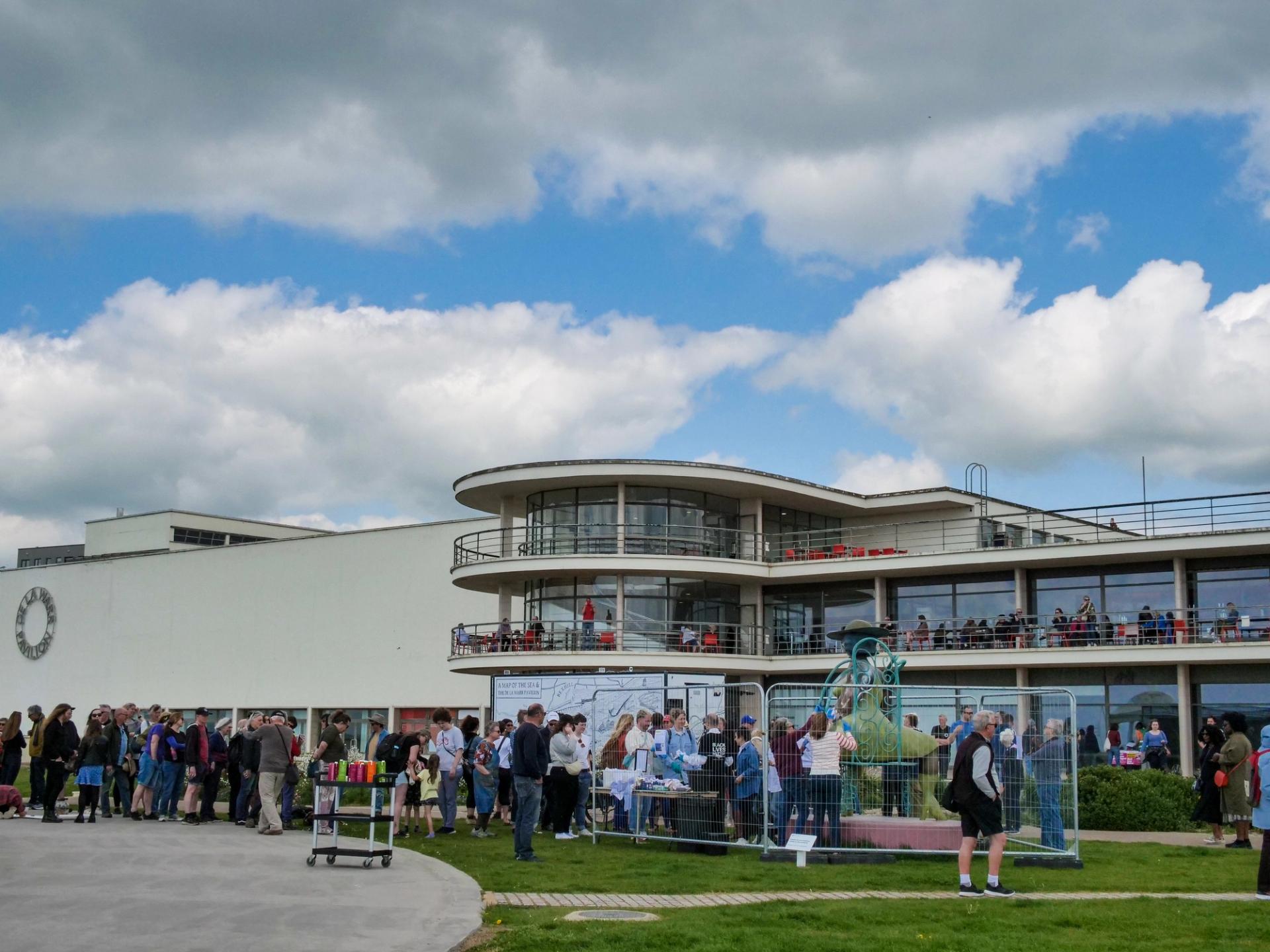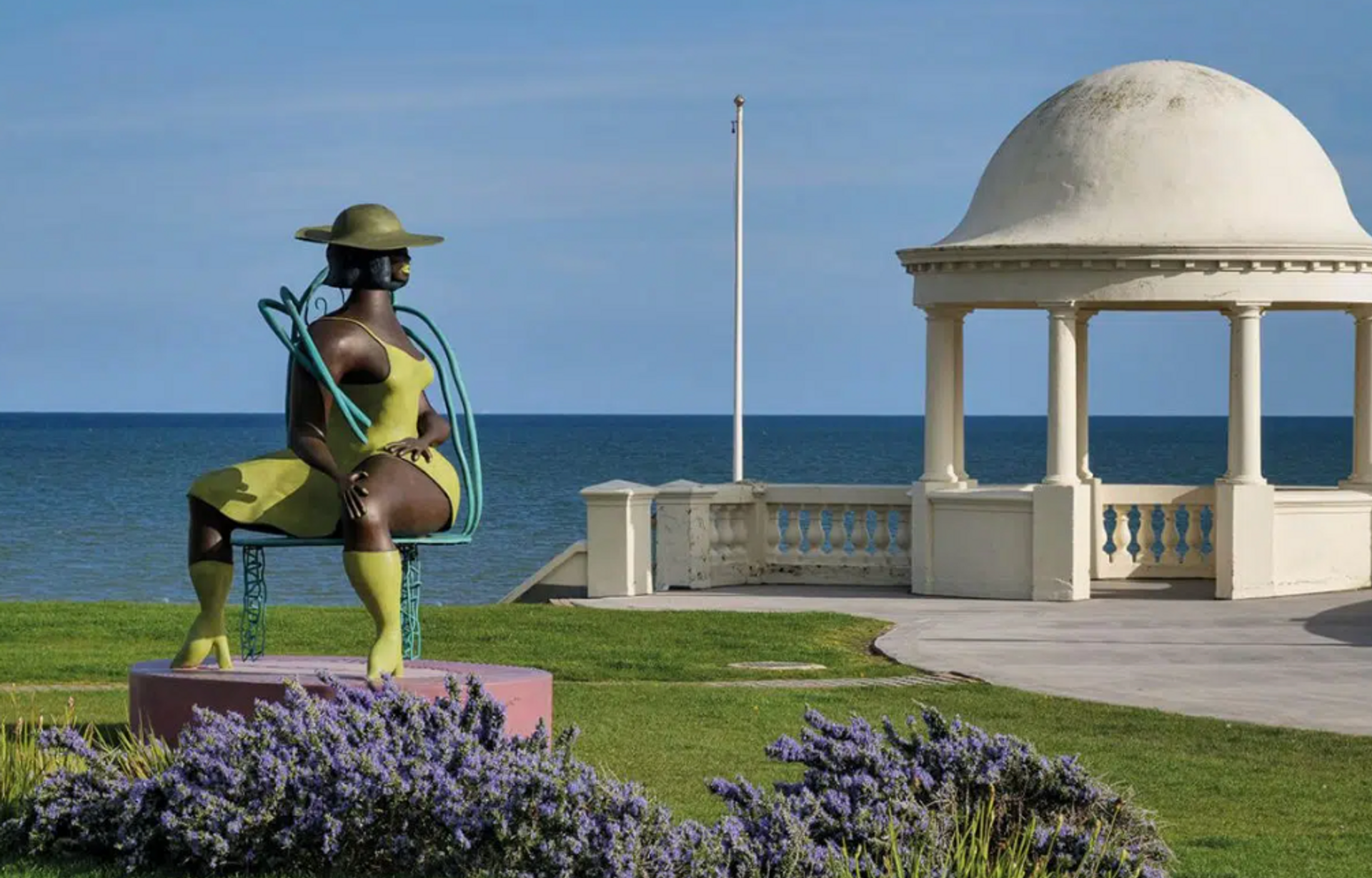Hundreds of people have helped clean up and restore a sculpture of a seated black woman by American artist Tschabalala Self which was vandalized last week (May 15). The three meter high bronze work titled Seated (2022) – which has been temporarily installed outside the De La Warr Pavilion in Bexhill-on Sea on the south coast of England (until 29 October) – was defaced when “the aggressor covered the ‘completeness of woman’s skin with white spray paint,’ reads a statement from the pavilion.
Volunteers were asked to “help remove the paint and bring the community together in a peaceful act of resistance.” A spokesperson for the pavilion says about 500 people later attended. “We had to extend the event to make sure everyone in line could attend due to the high turnout,” she says. Seated will continue to be professionally restored and will reopen on Saturday June 3rd.

Volunteers line up to help clean up the vandalized sculpture
© Lineker Photography / @lineker_photography
Self said in a statement. “I am very discouraged that my sculpture Seated was targeted and attacked by vandals. Despite my disappointment, I am not surprised that black women, and especially black female bodies, are often targets of abuse. Seated proudly represents the beauty of blackness and femininity, and for those same reasons she was hurt: covered by her attacker in white spray paint in a vain attempt to erase her color and, in my mind, her strength.
She adds, “I hope the violence exerted on the sculpture sheds light on the ongoing issues plaguing the global West. Painting the skin of my sculpture white is an obscene act and I feel horribly for the people of Bexhill-on-Sea for whom this event may have shocked or frightened.

Tschabalala Self’s Seated (2023), Installation view, De la Warr Pavilion, Bexhill-on-Sea.
© Lineker Photography / @lineker_photography
Seated was commissioned by the company Avant Arte and produced by the Madrid studio Factum Arte. “The presentation at the De La Warr Pavilion is kindly supported by Pilar Corrias Gallery, London [which represents the artist],” the pavilion’s website reads.
In a 2020 interviewSelf discussed her distinctive works depicting black and female-dominated figures, which both “embrace and confuse the collective fantasies and assumptions surrounding the black female body,” according to our correspondent Louisa Buck.
